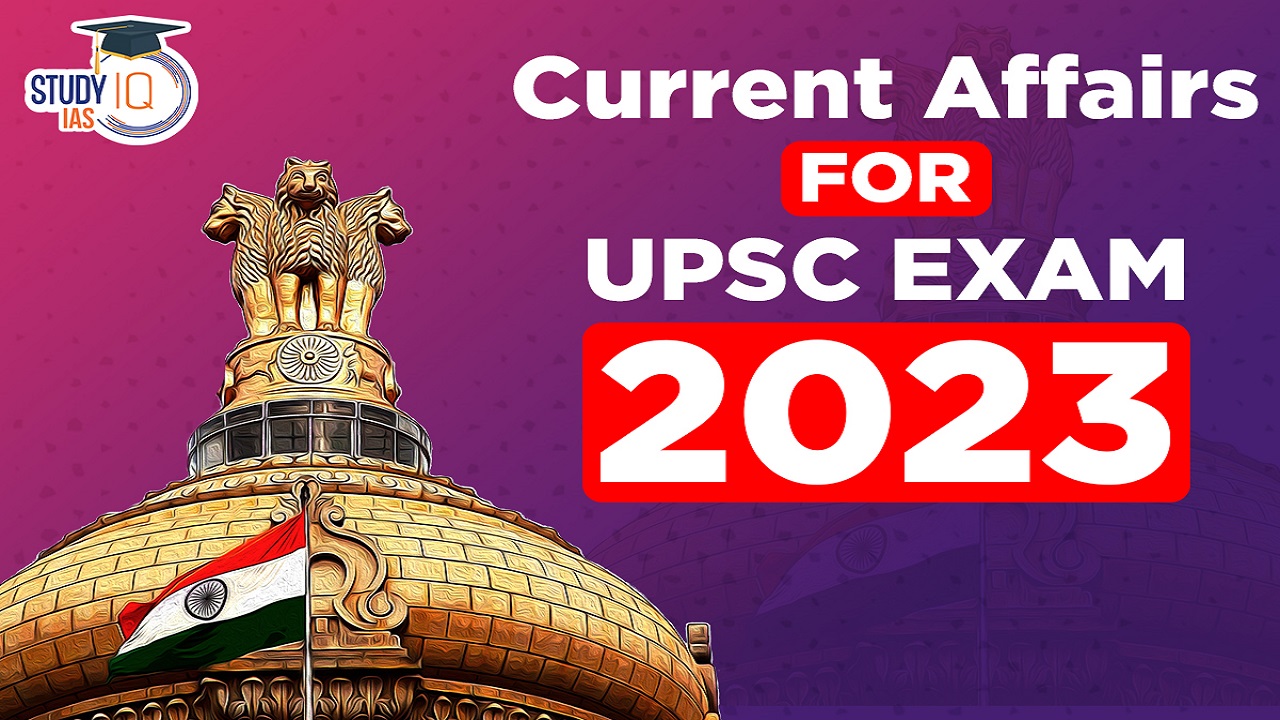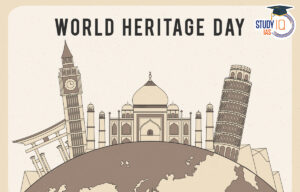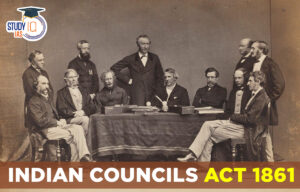Current Affairs 19th September 2023 for UPSC Prelims Exam
Right to Marry
Context: The Delhi High Court recently observed that the choice to choose a life partner cannot be affected by matters of faith and religion.
More on the news
- The court said that the right to marry is an incident of human liberty.
- The right to marry a person of one’s choice is not only underscored in the Universal Declaration of Human Rights but is also an integral facet of Article 21 of the Constitution.
- The court also reiterated that the choice to choose a life partner cannot in any way be affected by matters of faith and religion.
Right to Marry in India
- Judicial Pronouncements:
- Shafin Jahan v Ashok KM (2018): The Supreme Court upheld the right to marry a person of one’s choice as an integral part of Article 21 i.e., Right to Life and Personal Liberty.
- K.S. Puttaswamy v UOI (2017): The Supreme Court held that “right of choice of a family life” as a fundamental right.
- Lata Singh v. State of U.P. (2006): In this case, the Supreme Court upheld the right of adults to marry of their own choice, regardless of caste or religion, and declared that any interference in the right to marry by family members or others is illegal.
- Right to Marry is not Absolute: The right to life is guaranteed by the Constitution. This privilege can only be taken away by a law that is procedurally, procedurally, and substantively fair, just, and reasonable.
- The Prohibition of Child Marriage Act, 2006 sets the legal age of marriage for women at 18 years and for men at 21 years.
- The Protection of Women from Domestic Violence Act, 2005 prohibits forced marriage and provides for punishment for those who commit this crime.
- The Indian Penal Code, 1860 prohibits bigamy, which is defined as the act of marrying another person while one is already legally married.
- Personal Laws: In India, diverse personal laws on marriage make forced marriage illegal, with the right to marry recognized by both Hindu and Muslim laws.
- Other regulations in India that govern a person’s right to marriage include:
- The 2006 Child Marriage Prohibition Act,
- The 1890 Guardians and Wards Act,
- The 1875 Majority Act,
- The 1984 Family Courts Act,
- The Protection of Women from Domestic Violence Act of 2005.
Current Affairs 18th September 2023 for UPSC Prelims Exam
Core Inflation
Context: The core inflation in India is observed to have been steady at 4.9 per cent as of August 2023.
About core Inflation:
- Core inflation is the change in the costs of goods and services but it does not include those from the food and energy sectors.
- Food and energy prices are exempt from this calculation because their prices can be too volatile or fluctuate wildly.
- Core inflation is mostly calculated using the consumer price Index (CPI), which is a measure of prices for goods and services
Importance of Core Inflation:
- Core inflation is used to determine the impact of rising prices on consumer income.
- If the increase in the price index is due to temporary shocks that could soon reverse themselves, it may not require any monetary policy action.
- To deal with such situations, many central banks use measures of core inflation that are designed to filter the transitory price movements.
- Core inflation by eliminating the volatile components from the headline helps in identifying the underlying trend in headline inflation and is believed to predict future inflation better.
- Core inflation is a convenient guide to help the central bank achieve its objective of controlling total inflation.
Headline Inflation:
- Headline inflation refers to the rate of change in the CPI, a measure of the average price of a standard basket of goods and services consumed by a typical family.
India Club House
Context: London’s India Club that served as a crucial gathering place for Indians in the United Kingdom during the independence movement, has closed its operations permanently.
About India Club House
- Establishment: It was founded on The Strand in 1951 by the India League.
- The India League is a British organisation that was set up in 1928 to campaign for India’s independence and self-rule (swaraj).
- It included members of the elite in British society.
- The Founding members of the club included Jawaharlal Nehru, India’s first prime minister , Krishna Menon and Countess Mountbatten of Burma, the wife of the country’s last viceroy.
- V K Krishna Menon, one of the founding members became the first High Commissioner of independent India to the UK.
- He wrote the first draft of the Preamble to the Constitution of India, initiated the idea of the Constituent Assembly of India and was the architect, and the person who coined the name, of the Non-Aligned Movement.
- He was chairman of the Indian delegation at the United Nations General Assembly from 1953 to 1962, at sessions of the United Nations Trusteeship Council from 1953 to 1956, and to the Eighteen Nation Committee on Disarmament.
- He was a member of the Indian National Congress and was once a member of the British Labour Party.
Other Important Organizations Established during the Indian Independence Movement:
- Indian Home Rule Society/India House: The Indian Home Rule Society, or India House, was founded in London in 1905 by Shyamji Krishnavarma. It served as a centre for Indian students and aimed to recruit radical youth from India who were dedicated to the cause of Indian independence.
- Paris India Society: With the assistance of Munchershah Burjorji Godrej and S R Rana, Madam Bhikaji Cama established the Paris India Society in 1905. The organization served as a branch of the India Home Rule Society, supporting the cause of Indian independence.
- Berlin Committee for Indian Independence: The Berlin Committee for Indian Independence was founded by Virendranath Chattopadhyaya in 1915, Bhupendranath Dutta, Lala Hardayal, and others.
PM-WANI Scheme
Context: Like UPI, PM-WANI is believed to transform India’s digital public infrastructure.
PM-WANI scheme
- Launch: Prime Minister’s WiFi Access Network Interface (PM-WANI) was launched by the Department of Telecommunication in December 2020.
- This was first recommended by the Telecom Regulatory Authority of India (TRAI) in 2017.
- Objective: The scheme aims to enhance the proliferation of public WiFi hotspots to create robust digital communications infrastructure in the country, especially in rural areas.
- PM-WANI ecosystem: PM-WANI ecosystem consists of four parts: Public Data Office (PDO), Public Data Office Aggregator (PDOA), App Provider, and Central Registry.
- PDO establishes the Wi-Fi Hotspots and provides internet access to users.
- PDOA provides authorisation and accounting services to PDOs.
- The app provider displays the available hotspots in the phone’s proximity.
- The central registry overseen by the Centre for Development of Telematics maintains details of App Providers, PDOs, and PDOAs.
- Benefits of PM-WANI:
- It can scale up internet access in rural areas, thereby narrowing the digital divide.
- It would introduce more business-friendly environment by boosting ease of doing business.
- Can generate jobs in small- and medium-scale sectors.
- Could provide affordable internet access to the mass underserved section of society and help boost digital India.
- Challenges in PM WANI Implementation:
- Security Risks: Public Wi-Fi networks lack encryption, making them susceptible to security attacks and unauthorized access.
- Infrastructure Hurdles: Obtaining suitable locations (Access Points) for Wi-Fi towers can be challenging.
- Low Speed: High user traffic on public Wi-Fi networks often results in bandwidth congestion, leading to slow network speeds.
Hoysala Temples
Context: The ‘Sacred Ensembles of the Hoysalas’, which includes three temples in Karnataka, has been inscribed on the UNESCO’s World Heritage List, bringing the total number of Indian sites on the list to 42.
About the ‘Sacred Ensembles of the Hoysalas’
- The three temples include the following:
- The Chennakeshava temple, the main temple in the complex at Belur (Hassan district);
- The Hoysaleswara Temple on the banks of Dwarasamudra tank in Halebidu (Hassan district); and
- The Keshava Temple at the centre of Somanathapura village (Mysore district).
- The temples were built in the 12th to 13th centuries during the Hoysala era.
- The Hoysala Empire ruled a large portion of the modern-day state of Karnataka between the 10th and 14th centuries.
- Capital: The capital of the empire was initially located at Belur and later moved to Halebidu.
- Founder: Sala, also known as Nripakama, was the Hoysala dynasty’s founder.
- Chennakeshava Temple is also referred to as Vijayanarayana Temple of Belur.
- The temple was commissioned by King Vishnuvardhana in 1117 CE, on the banks of the Yagachi River in Belur.
- The temple is devoted to Vishnu.
- The richly sculptured exterior of the temple narrates scenes from the life of Vishnu and his reincarnations and the epics, Ramayana, and Mahabharata.
- However, some of the representations of Shiva are also included.

- Hoysaleswara temple also referred simply as the Halebidu temple is a 12th-century Hindu temple dedicated to Shiva.
- The temple was built in 1121CE during the reign of the Hoysala King, Vishnuvardhana Hoysaleshwara.
- The temple is most well-known for the more than 240 wall sculptures that run all along the outer wall.

- Keshava Temple is a Vaishnava temple on the banks of River Kaveri at Somanathapura, Karnataka.
- The temple was consecrated in 1258 CE by Somanatha Dandanayaka, a general of the Hoysala King Narasimha III.
- The temple is enclosed in a courtyard with a pillared corridor of small shrines (damaged).
- The main temple in the centre is on a high star-shaped platform with three symmetrical sanctums (garbha-griha).
- The western sanctum was for a statue of Kesava (missing), the northern sanctum of Janardhana and the southern sanctum of Venugopala, all forms of Vishnu.



 World Heritage Day 2025, Theme, Objectiv...
World Heritage Day 2025, Theme, Objectiv...
 Indian Councils Act 1861, History, Provi...
Indian Councils Act 1861, History, Provi...
 Daily Quiz 17 April 2025
Daily Quiz 17 April 2025





















